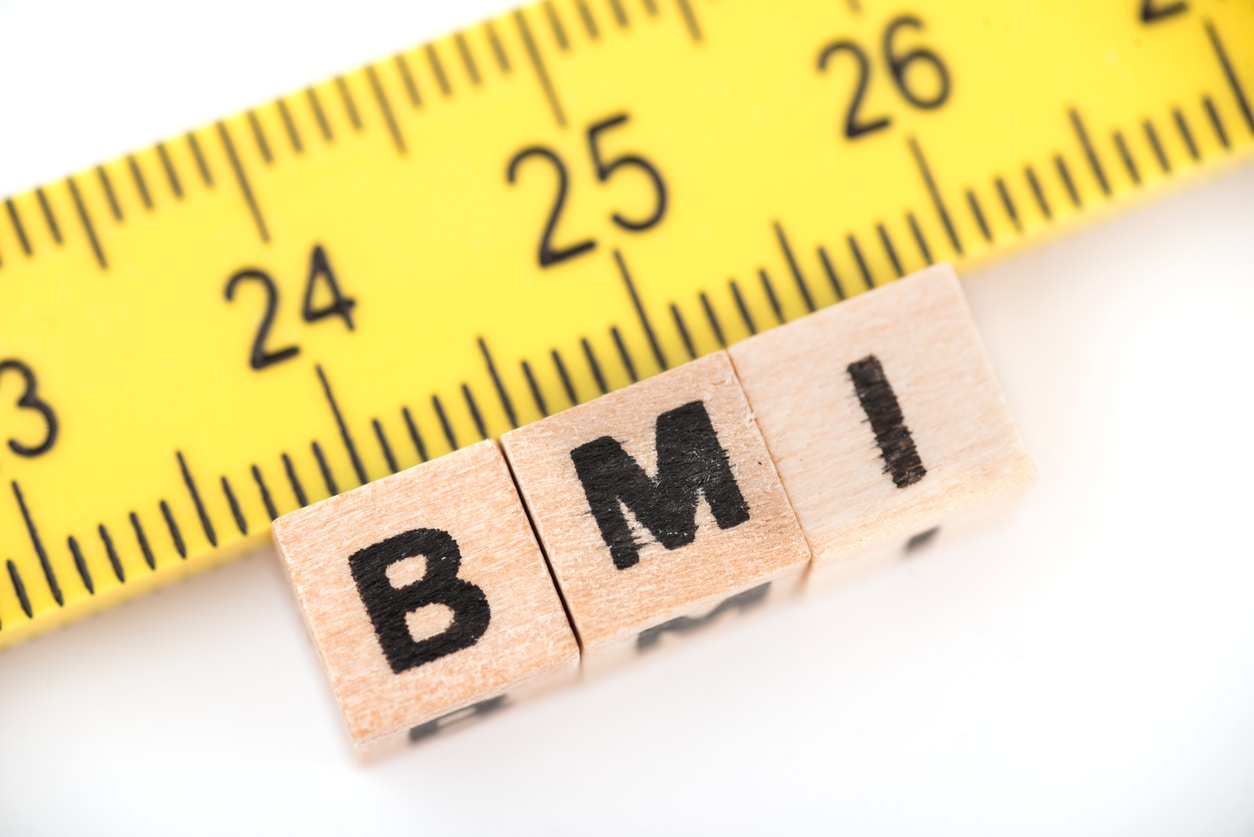What to know
Body mass index (BMI) is a calculated measure of body weight relative to height. Annual BMI screening is recommended as part of routine pediatric care. Although BMI does not directly measure adiposity (body fatness), BMI is correlated with direct measures of adiposity.

What is BMI?
A measure of weight relative to height
Body mass index (BMI) is a calculated measure of body weight relative to height.[1] Metric measures are in kilograms (kg) and meters (m) or centimeters (cm). The US customary unit measures are in pounds and inches (in). The equations for calculating BMI by hand are:
- Metric units: BMI = weight (kg) / [height (m)]2
- Metric units: BMI = [weight (kg) / height (cm) / height (cm)] x 10,000
- US customary units: BMI = weight (pounds) / [height (in)]2 x 703
BMI Calculator
A screening measure
The American Academy of Pediatrics (AAP)/Bright Futures Preventive Care Guidelines recommend annual BMI screening for children and adolescents 2 years and older as part of routine pediatric care.[2] Screening can identify whether a BMI falls into the underweight, healthy weight, overweight, obesity, or severe obesity category. Obesity is associated with health problems such as asthma, sleep apnea, bone and joint problems, type 2 diabetes, and risk factors for heart disease such as high blood pressure.
Children are growing. As a result, their BMI values need to be expressed relative to other children of the same sex and age. These are called BMI-for-age percentiles. Read more about Child and Teen BMI Categories.
An indirect measure of adiposity
BMI is correlated with direct measures of adiposity (body fatness), such as dual energy x-ray absorptiometry (or DEXA) scans. However, BMI is not a direct measure of adiposity. BMI does not distinguish between fat and lean body mass, nor does it capture the body's fat distribution. Compared to direct measures of adiposity, BMI is simpler, less expensive, less invasive, and is collected in routine pediatric health care.
Recommendations
To monitor the growth of children and adolescents 2 years and older, CDC recommends that health care providers use the:
- CDC 2000 CDC Growth Charts for children and adolescents 2 years and older.
- CDC 2022 Extended BMI-for-age Growth Charts for children and adolescents 2 and older with very high BMIs (above the 97th percentile for age and sex).
Test your knowledge
- Body mass index (BMI) is a calculated measure of body weight relative to height.
- True
- False
- True
- BMI percentiles are age- and sex-specific for children and adolescents. Calculating BMI as a percentile based on age and sex allows health professionals to screen children and adolescents for underweight, healthy weight, overweight, obesity, or severe obesity:
- True
- False
- True
- Which statement accurately describes BMI?
- BMI is correlated with direct measures of body fat.
- BMI directly measures body fat.
- BMI is correlated with direct measures of body fat.
See answers.A
- Question 1: True. BMI is a calculated measure of body weight in kilograms divided by height in meters squared. Question 2: True. Because children and adolescents are growing, their BMIs need to be expressed relative to other children or adolescents of the same sex and age. Question 3: A. BMI does not directly measure body fat nor distinguish between fat and lean body mass. However, BMI correlates with direct measures of body fat.
- Keys A, Fidanza F, Karvonen MJ, et al. Indices of relative weight and obesity. J Chronic Dis. 1972;25(6):329–343. doi: 10.1016/0021-9681(72)90027-6
- Hampl SE, Hassink SG, Skinner AC, et al. Executive Summary: Clinical Practice Guideline for the Evaluation and Treatment of Children and Adolescents With Obesity. Pediatrics. 2023;151(2):e2022060641. https://doi.org/10.1542/peds.2022-060640
